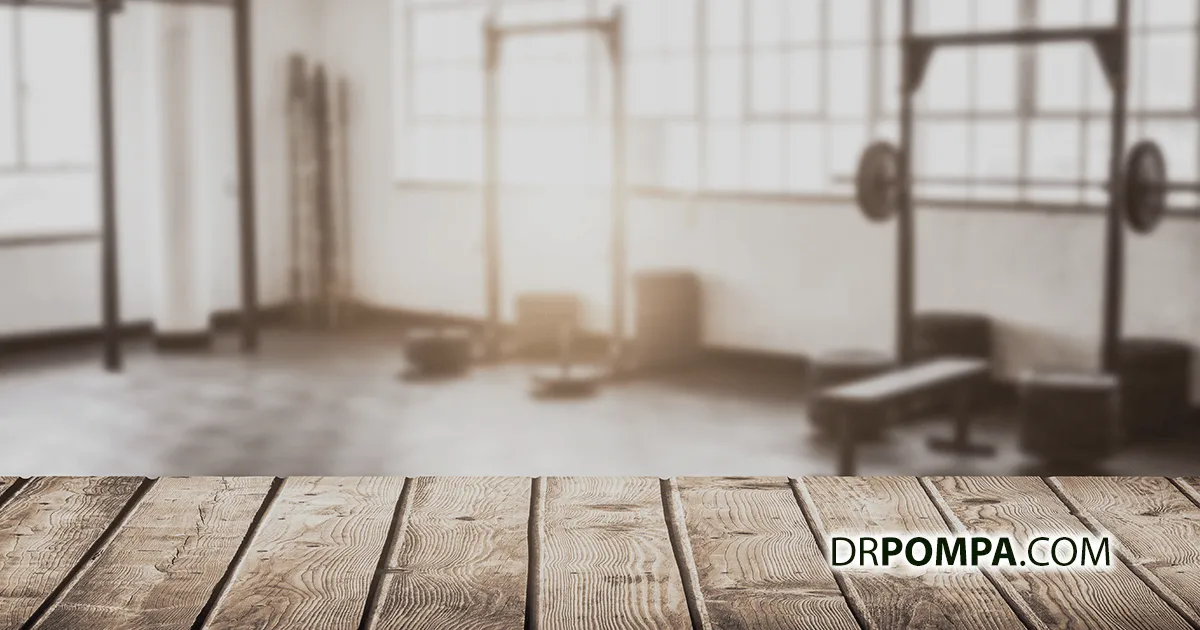What is functional exercise? Why is functional exercise important? How can I bring it into my life? These are all questions on people’s minds now that “functional” has made its way to the forefront of health sciences. When defined simply, it has really always been there. The American Council on Exercise (ACE) describes functional exercise as an exercise in which “the primary goal… is to transfer the improvements in strength achieved in one movement to enhancing the performance of another movement by affecting the entire neuromuscular system.”1 That means everything from squats to pull-ups could be considered a functional exercise. It excludes more aesthetic exercises like curls, but a lot of our basic theories towards fitness are functionally based.
What is a newer phenomenon, however, is the emphasis on functional exercise and functional training. Since the inception of the commercial gym, most fitness facilities have been geared towards body builders. That means a huge emphasis on aesthetic exercises. Even now, when you think of the gym, you likely think of muscle bound men in tank tops doing bicep work for hours. Or you might think of treadmills and other cardio workouts. While you could consider the latter mildly functional (many run in everyday life), the idea of “running so you can run better” betrays the basic tenants of the above definition.
In recent years, there’s been a switch. If you go into any gym, you’re likely to see boxes, medicine balls, agility ladders, and a host of equipment meant specifically to improve functionality. Trainers now emphasize range of motion. They emphasize every day movements. The industry finally realized that not everyone wants to look like Arnold. Some people simply want to improve their quality of life through functional exercise.
Should you be incorporating functional movements into your workout? Or if you’re not working out, can and should you incorporate functional movement into your everyday life? We recently had Mike Bledsoe on Cellular Healing TV, and he definitely thinks so. Bledsoe is a Navy vet, a cross fit trainer, a gym owner, and host of the top fitness podcast, Barbell Shrugged. If there is anyone more dedicated and knowledgeable in the realm of fitness performance, we don’t want to meet him. Throughout his career, he’s placed a huge emphasis on the connection between the mind and the body. While he definitely doesn’t rule the method out, it’s not in the typical yoga and meditation sense that Mike makes the mind body connection. Rather, he builds the connection through movement. His philosophy dictates that we shouldn’t be treating two separate entities, but a single, inseparable being.
The Bottom Squat
So let’s talk about functional exercise and movement. Specifically, functional movement. For example, let’s look at what Bledsoe calls a bottom squat. It goes by many names, but basically the movement goes back to how our ancestors rested. Chairs did not exist at the time of cavemen, so they generally just dropped down into a squat and hung out in that position. Many people in undeveloped areas still rest in a squatting position. As a result, they tend to have healthier spines and virtually no chronic back pain2.
A few years ago, I did a conference in Zimbabwe. In Africa, many communities still use the bottom squat while working, eating, or simply relaxing. It’s how they’ve always done it, and there’s no reason stop the tradition. However, with the rapid development of Africa, people have started to lose touch with old habits. People are choosing chairs instead of the squat, and who wouldn’t? On the surface, chairs appear to be a much better option. Muscles are taken out of the equation, and muscles at rest should mean your body is at rest. During the conference, I brought up the importance of the squat. I explained the importance of posture, and the topic played a crucial point. The man who ran the conference interrupted me to share that he has been reminding his community of the importance of squatting for years. They had lost the habit, and he saw they were paying the price. Since moving away from squatting in favor of chairs, bone fractures and arthritis had been on the rise. We know this is because of the benefits squatting has on your hips, back, and knees. Doing heavy weight squats can put strain on these body parts if done incorrectly, but weightless resting squats have the squatting benefits without the risk. In fact, making the movement a part of everyday life has even more benefits.
As noted, the bottom squat and posture go hand in hand. Look at how we carry ourselves these days: our shoulders slouch forward, necks are constantly bent, backs are usually hunched over. In all honesty, it’s pretty abysmal. It’s not our fault though. As society has progressed, we spend more time sitting in chairs at computers than we do moving around as is natural. I myself am spending a few hours leaning over a computer to write this article. So how can we fix it, or at least mitigate the issue? Standing desks are a hot new trend, but it’s still easy to hunch your shoulders, or shift onto one leg over the other. Let’s be real; most people don’t have the best posture when standing either. So, let’s fix it with squats. If you watch the podcast, you’ll see Bledsoe demonstrate exactly what he means when he talks about a bottom squat. He keeps his back flat, and his neck in a neutral position to his spine. For all intents and purposes, his spinal posture is perfect. Researchers have noted that in the aforementioned populations without back pain, the spine is in a j-shape. We tend to have s-shaped spines. The position required of a bottom squat helps to push our spines back into the natural j-shape.
Unfortunately, excess sitting seems to promote s-shaped spines. What happens when we sit in a chair? I already mentioned that it takes muscles out of the equation, but let’s get more specific. The obvious effect is that you are inactive. Inactivity for long periods of time is bad for our health. But it also takes the glutes out of action when we sit. When we squat, our glutes play a major part in stabilizing, and then eventually in driving us to stand up. Strong, healthy glutes help take stress off the knees and lower back. If you’re not a gym-goer, that may not seem like a huge deal. It probably sounds like I’m saying “you need to squat so you can squat better.” But every time you bend down to grab the paper or step up a high ledge, you’re putting your back and knees at risk. When you lose glute strength, that’s when you run the risk of throwing out your back doing something embarrassing. That’s when you have to have your knee replaced at 55. While I encourage everyone to adopt a resistance training program, the bottom squat is not just for weight lifters, it’s for everyone. It’s called a functional movement because it helps you function. By the way, I’ve been practicing squatting since the show, and can squat for 10 minutes now!
The last benefit of squatting may seem out in left field. Let’s do a little test. Find a mirror where you can see your whole body. Take a deep breath and watch which parts of your body are moving. Are you raising your shoulders? Do you expand around your chest but nowhere else? That means you’re not breathing properly. Now drop down into a squat. Take another deep breath and watch. Do you see as much shoulder movement? Probably not. This is because the squatting posture forces you to breathe from your diaphragm. You’re getting full, efficient breaths. If you’re taking shallow breathes throughout the day, you’re not helping your body to function efficiently. The majority of oxygen exchange doesn’t even happen until it gets deep into your lungs3. If you’re not making full use of this system, that means you may not get enough oxygen into your blood stream. That can lead to a host of problems. In addition, diaphragm breathing helps your nervous system. When you get down into a squat, your breathing improves. You’ll be getting in deep breaths for at least the ten minutes in the day you’re squatting. But what’s really important is building the habit. Here’s a good example: Some baseball players will put a weight on the knob of their bat (note that this is different from the weighted “donut”). It forces them to drive their hands straight through the swing before straightening their front elbow. Once they take it off, there’s no longer anything forcing it. Does that mean they’re going to immediately start swinging with poor form? Of course not. Practicing good form, or good breathing, is important, but there’s nothing wrong with forcing it either for training.
Practice Time
We’ve talked about the theory, but what about the practice of functional exercise? Of course, you need not throw out your chairs and start eating dinner squatted around the coffee table. If you’ve been living like the average American, you might not even be able to hold the bottom squat for two minutes. That’s a problem, and that’s what you can address first. Bledsoe suggests trying to work in ten minutes of squatting per day. Maybe it’s in one or two minute intervals. Maybe you get up and squat through every commercial break while you watch TV after work. Whatever it is, just start doing it. Take short breaks throughout the day and drop all the way down. Keep your back flat and spine neutral. Most importantly, do it with your feet flat. That can be difficult for a lot of people, as Americans tend to squat on the balls of our feet so we can rest on our butts on our heels. Doing so can make us off balance. What you should be trying to achieve is a sustained position, which is difficult if you’re constantly falling over.
Upper Body Function
Alright, we’ve beaten the bottom squat to death, but that’s only your lower body. Let’s talking about building upper body strength. To start, Bledsoe advocates for a straight arm hang for a cumulative seven minutes a day. You can use a pull up bar, a rafter, a door frame, whatever you have available. He mentions some of his friends grabbing onto a tree branch to knock it out, which has two main functions. First, it works on your shoulders, as it takes a lot of strength just to stay up. This is going to improve your stability and range of motion. As we age, static holds become crucial; you don’t want to be the person who can’t raise their arms above their head. The second benefit of this act is improving grip. When doing exercises like pull ups, many people find their lack of strength really comes down to the grip. While you’re probably not trying to knock out a pull-up record in this year’s CrossFit Games, improved grip can also play into finger dexterity4. As we age, things like typing can get more and more difficult. Our fingers stopping moving as well as they used to. It may seem obvious when you think about it, but you probably don’t associate your ability to play a piano with your grip strength. We often overlook how interconnected our tiniest of muscles are to one another.
Functional Exercise In the Weight Room
Let’s move on to our final topic incorporating functional exercise work into the weight room. Static hangs and resting squats are great to do throughout the day. You can work them in pretty much anywhere, and both have amazing health benefits. However, you’re not going to drive yourself to the gym to do squats in the corner, right? The answer to the question of how to implement functional movement at the gym really depends on your goals. Are you a senior citizen trying to regain some muscle and mobility? Are you a healthy middle-aged individual trying to delay the aging process? Both approaches would look completely different. You need not concern yourself with squats or hangs. And while it can be tempting to sit down on a machine, throw up some light reps and call it a day, we’re going to avoid that as well. Let’s take movements that we already know to be functional, and adapt them to actual movements in life. For example, instead of attempting a resting squat, try squatting down to a bench chair and work on raising using only your lower body. We can also take it the other direction. Instead of adapting these big movements, break them up. If you find your dexterity failing, train your grip. That can be as simple as using the classic grip master. While it’s best to prevent the effects of aging by leading a healthy and active lifestyle using my Multi-Therapeutic Approach to health and cellular healing, remember Bledsoe’s advice: exercise and functionality is adaptable and vital for ALL life stages.
Now let’s transition to the aforementioned middle-aged individual. You’re healthy. Your joints are ok, just some clicks and pops here and there. Your knees aren’t as tough as they used to be, but you get by. This is the perfect time to pump up the functional work. Once you hit your mid-30s, you start to lose muscle mass, and if you do nothing to address it, you may enter your golden years feeling weak. You can develop injuries quicker, and they may leave you debilitated longer5. The single best way to prevent them is to simply stay active. In this arena, Bledsoe puts a major emphasis on two things. First, it’s those static holds again. Your resting squats, arm hangs, and planks; these are all going to help maintain muscle mass and functionality. The second thing he emphasizes is the eccentric motion. You may also know of it as the negative of the exercise. In a bench press, that’s the lowering of the bar. This is going to help you recruit more muscle fibers, as well as improve stability. For functionality purposes, remember that you can’t just drop most heavy things in your life. While most weightlifters simply drop their deadlifts from the top, you can’t just drop that heavy box of fine china. Real life takes slow, careful, and steady movements.
Conclusion
Functional exercise is more than just a buzzword. Functional exercise and training can be life changing. Whether you want to prevent muscle loss, or simply be more in touch with your body’s natural movements, functional training can get you there. If you want to learn more about Michael Bledsoe’s work and philosophy, check out his website and podcast, Barbell Shrugged, and just keep moving.
- Bryant, Cedric X. “What is functional strength training?” ACE Fit | Fitness Information. May 11, 2011. https://www.acefitness.org/acefit/healthy-living-article/60/1452/what-is-functional-strength-training/.
- Doucleff, Michaeleen. “Lost Posture: Why Some Indigenous Cultures May Not Have Back Pain.” NPR. June 08, 2015. http://www.npr.org/sections/goatsandsoda/2015/06/08/412314701/lost-posture-why-indigenous-cultures-dont-have-back-pain.
- Wednesday Wellness Tip – The Importance of the Breath. PDF. North Michigan University.
- McCall, Pete. “How to Improve Grip Strength.” ACE Fitness. https://www.acefitness.org/blog/5765/how-to-improve-grip-strength.
- American Heart Association. “Long-term physical activity has an anti-aging effect at the cellular level.” ScienceDaily. www.sciencedaily.com/releases/2009/11/091130161806.htm.











